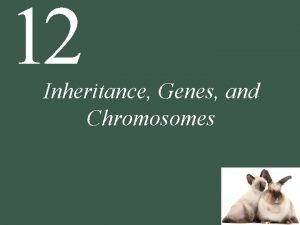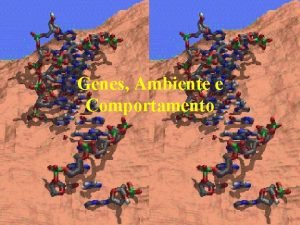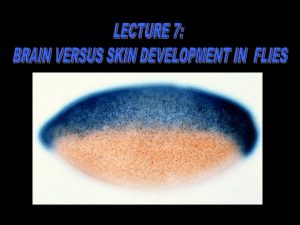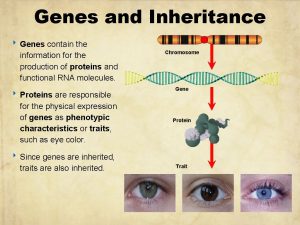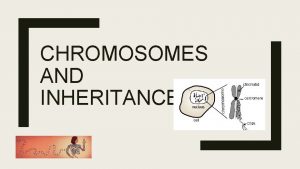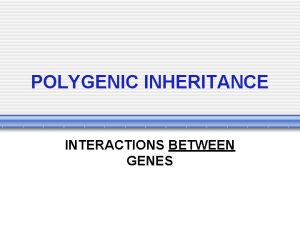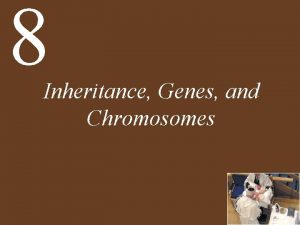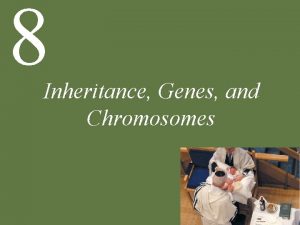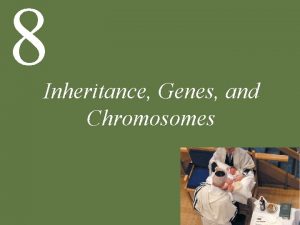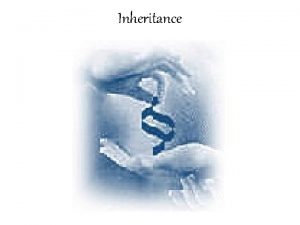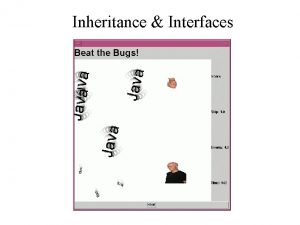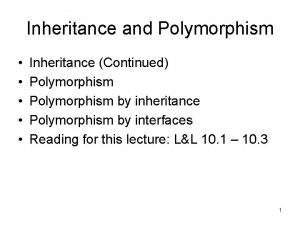3 4 INHERITANCE The inheritance of genes follow




















- Slides: 20

3. 4 INHERITANCE The inheritance of genes follow patterns

Mendel and the principles of inheritance ■ Mendel discovered the principles of inheritance with experiments in which large numbers of pea plants were crossed. ■ Gregory Mendel crossed several pea plants. ■ 1866 he published his work, but went ignored for several years. ■ Mendel is considered the father of genetics.


Gametes ■ Gametes are haploid so contain one allele of each gene. ■ Gametes are cells that fuse together to produce a single cell that is the start of a new life. ■ During meiosis I, homologous chromosomes are separated into different nuclei prior to cell division. ■ As homologous chromosomes carry the same genes, segregation of the chromosomes also separate the alleles pairs. ■ Consequently, as gametes contain only one copy of each chromosomes they therefore carry only one allele of each gene.

Zygotes ■ Fusion of gametes results in diploid zygotes with two alleles of each gene that may be the same allele of different alleles. ■ The fusion of sperm (23) and egg(23), double the chromosome numbers (46) ■ If there were two alleles of a gene, A and a, the zygote could contain two copies of each allele or one of each. – AA – Aa – aa

ABO blood group ■ Some genes have more than two alleles. ■ For example, the gene for ABO blood groups in humans have three alleles. – IA, I B, i ■ This gives six possible combinations of alleles: – IA IA – IB I B – ii – IA IB – IA i – IB i

Segregation of alleles ■ The two alleles of each gene separate into different haploid daughter nuclei during meiosis. ■ TT T Tt T T t

Dominant, Recessive, & Co-dominant ■ Dominant alleles mask the effects of recessive alleles but co-dominant alleles have joint effects.

Punnett Squares ■ Construction of Punnett grid for predicting outcomes of monohybrid genetic crosses. ■ P: ■ F 1: ■ F 2: ■ 3: 1 ratio (expected)


Genetic diseases due to recessive ■ Many genetic diseases in humans are due to recessive alleles of autosomal genes. ■ Some genetic diseases are sex-linked and some are due to dominant and co-dominant alleles. ■ Autosomal recessive: Must have two recessive alleles – Ex. Cystic fibrosis – Individuals who are heterozygous; are considered carriers ■ Autosomal dominant: Only needs to have one copy to be affected. – Ex. Huntington’s Disease – Heterozygous and Homozygous individuals will have the disease. ■ Co-dominant: Only requires one allele to be affected – Ex. Sickle Cell – However, those who are heterozygous will have milder


Sex-Linked diseases ■ The pattern of inheritance is different with sex-linked genes due to their location on sex chromosomes. ■ Sex-linked conditions are typically found on the X chromosome.

■ The pattern of inheritance is different with sex-linked genes due to their location on sex chromosomes. ■ Sex-linked inheritance patterns differ from autosomal patterns due to the fact that the chromosomes aren’t paired in males (XY). – This leads to the expression of sex-linked traits being predominantly associated with a particularly gender. ■ As human females have two X chromosomes, they can be either homozygous or heterozygous. – Hence, X-linked dominant traits are more common in females.

■ Only females can be carriers, males cannot ■ Males will always inherit an X-linked trait from their mother ■ Females cannot inherit an X-linked recessive condition from an unaffected father.


Red-green colour-blindness and hemophilia ■ Red-green colour-blindness and hemophilia are examples of sex-linked inheritance.

■ Radiation and mutagenic chemicals increase the mutation rate and can cause genetic disease and cancer.

■ Consequences of radiation after nuclear bombing of Hiroshima and Nagasaki and the nuclear accidents at Chernobyl.

 Glomerulus
Glomerulus Polygenic inheritance
Polygenic inheritance Linked genes and unlinked genes
Linked genes and unlinked genes I will always follow you whenever and wherever you go i
I will always follow you whenever and wherever you go i Quá trình desamine hóa có thể tạo ra
Quá trình desamine hóa có thể tạo ra Môn thể thao bắt đầu bằng từ chạy
Môn thể thao bắt đầu bằng từ chạy Khi nào hổ mẹ dạy hổ con săn mồi
Khi nào hổ mẹ dạy hổ con săn mồi Thế nào là mạng điện lắp đặt kiểu nổi
Thế nào là mạng điện lắp đặt kiểu nổi Hát kết hợp bộ gõ cơ thể
Hát kết hợp bộ gõ cơ thể Các loại đột biến cấu trúc nhiễm sắc thể
Các loại đột biến cấu trúc nhiễm sắc thể Thế nào là sự mỏi cơ
Thế nào là sự mỏi cơ Phản ứng thế ankan
Phản ứng thế ankan Voi kéo gỗ như thế nào
Voi kéo gỗ như thế nào Thiếu nhi thế giới liên hoan
Thiếu nhi thế giới liên hoan Phối cảnh
Phối cảnh điện thế nghỉ
điện thế nghỉ Một số thể thơ truyền thống
Một số thể thơ truyền thống Trời xanh đây là của chúng ta thể thơ
Trời xanh đây là của chúng ta thể thơ Thế nào là hệ số cao nhất
Thế nào là hệ số cao nhất Sơ đồ cơ thể người
Sơ đồ cơ thể người Lp html
Lp html





















